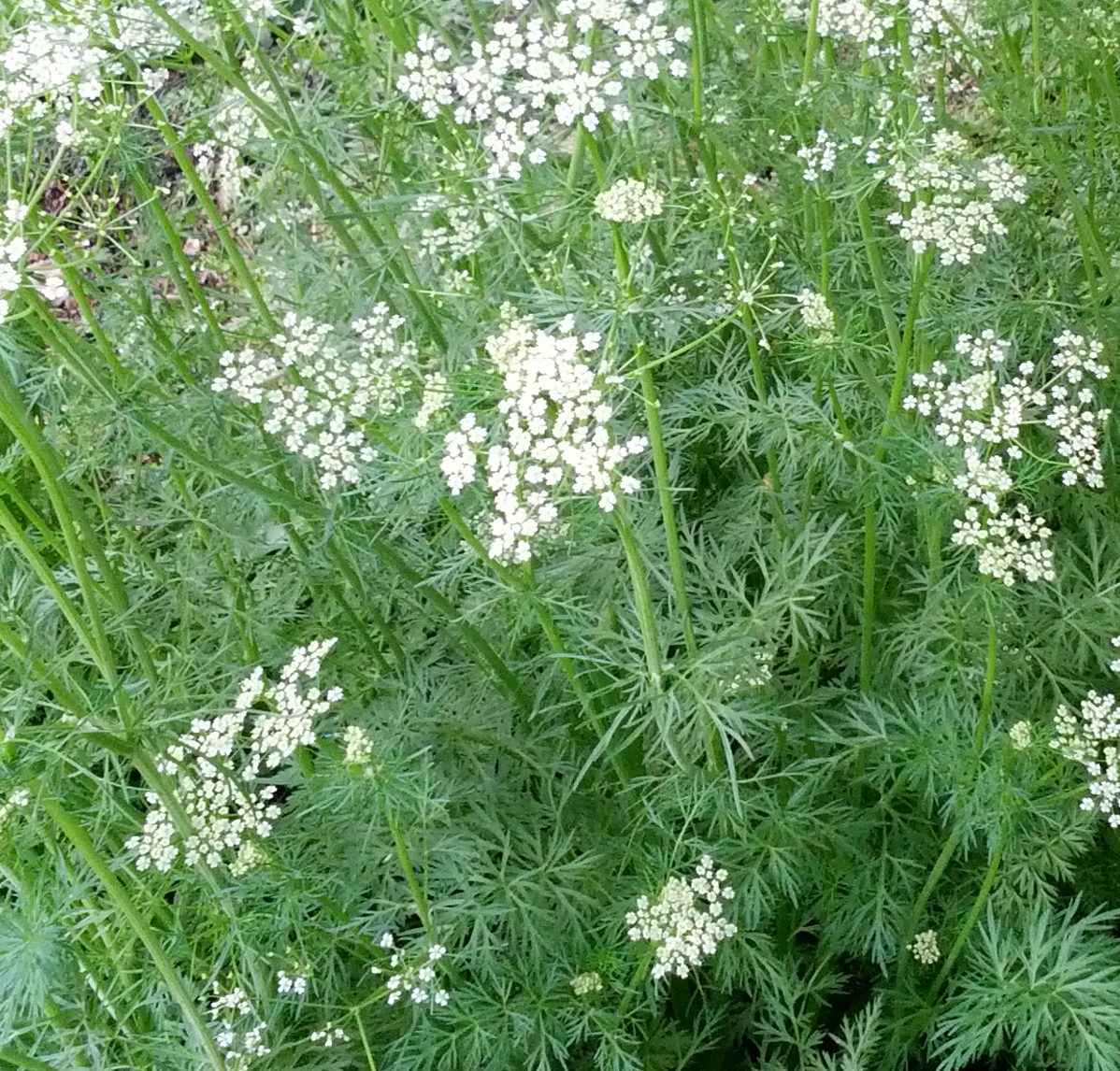 Cumin is a herbaceous annual native to the eastern Mediterranean east to India and has been known from ancient Egyptian times. It is a member of the dill family, Apiaceae, that also includes parsley, carrot, and Queen Anne’s lace. The plants are well branched and grow 12-20″” tall at a rapid rate. The leaves are 2-4″ long and pinnate or bipinnate with feathery leaflets. In summer small white or pink flowers are carried in compound umbels of 5-7 umbelletes. Cumin is usually grown for the culinary value of its seeds that ripen in late summer to early fall and are used extensively in Mexican and Indian cuisine. The genus name, Cuminum, comes from the Greek name for the plant, κύμινον.
Cumin is a herbaceous annual native to the eastern Mediterranean east to India and has been known from ancient Egyptian times. It is a member of the dill family, Apiaceae, that also includes parsley, carrot, and Queen Anne’s lace. The plants are well branched and grow 12-20″” tall at a rapid rate. The leaves are 2-4″ long and pinnate or bipinnate with feathery leaflets. In summer small white or pink flowers are carried in compound umbels of 5-7 umbelletes. Cumin is usually grown for the culinary value of its seeds that ripen in late summer to early fall and are used extensively in Mexican and Indian cuisine. The genus name, Cuminum, comes from the Greek name for the plant, κύμινον.
Type: Herbaceous annual
Bloom: Small white or pink flowers in compound umbels in summer
Size: 12-20″ H x 8″ W
Light: Full sun
Soil: Average, medium moist to dry, well-drained
Hardiness: Not hardy
Care: Low maintenance
Pests and Diseases: Aphids, wilt, blight, powdery mildew, and root rot
Propagation: Seed
Companion Plants: Other culinary herbs such as sage, oregano, and caraway
Photo Credit:Wikipedia